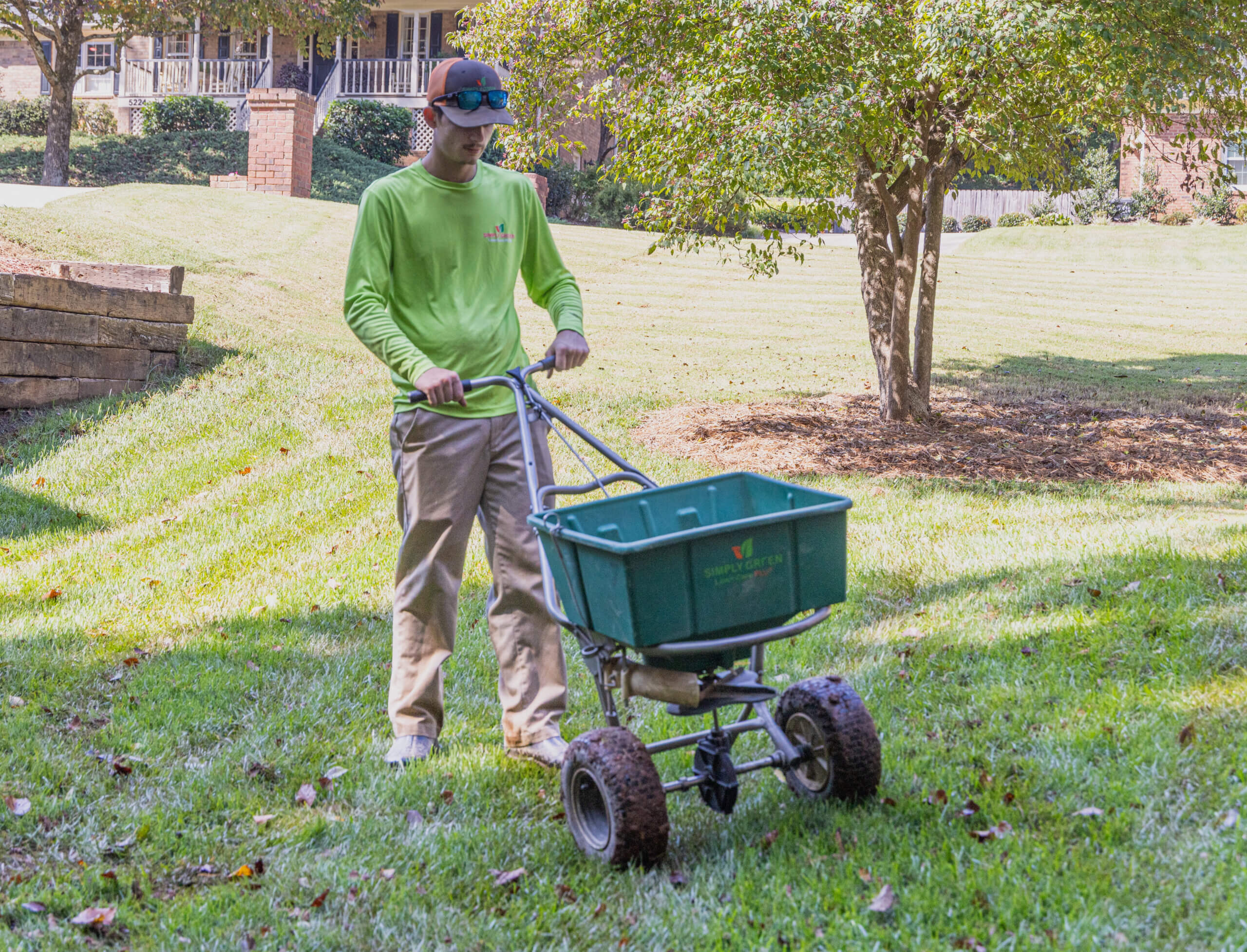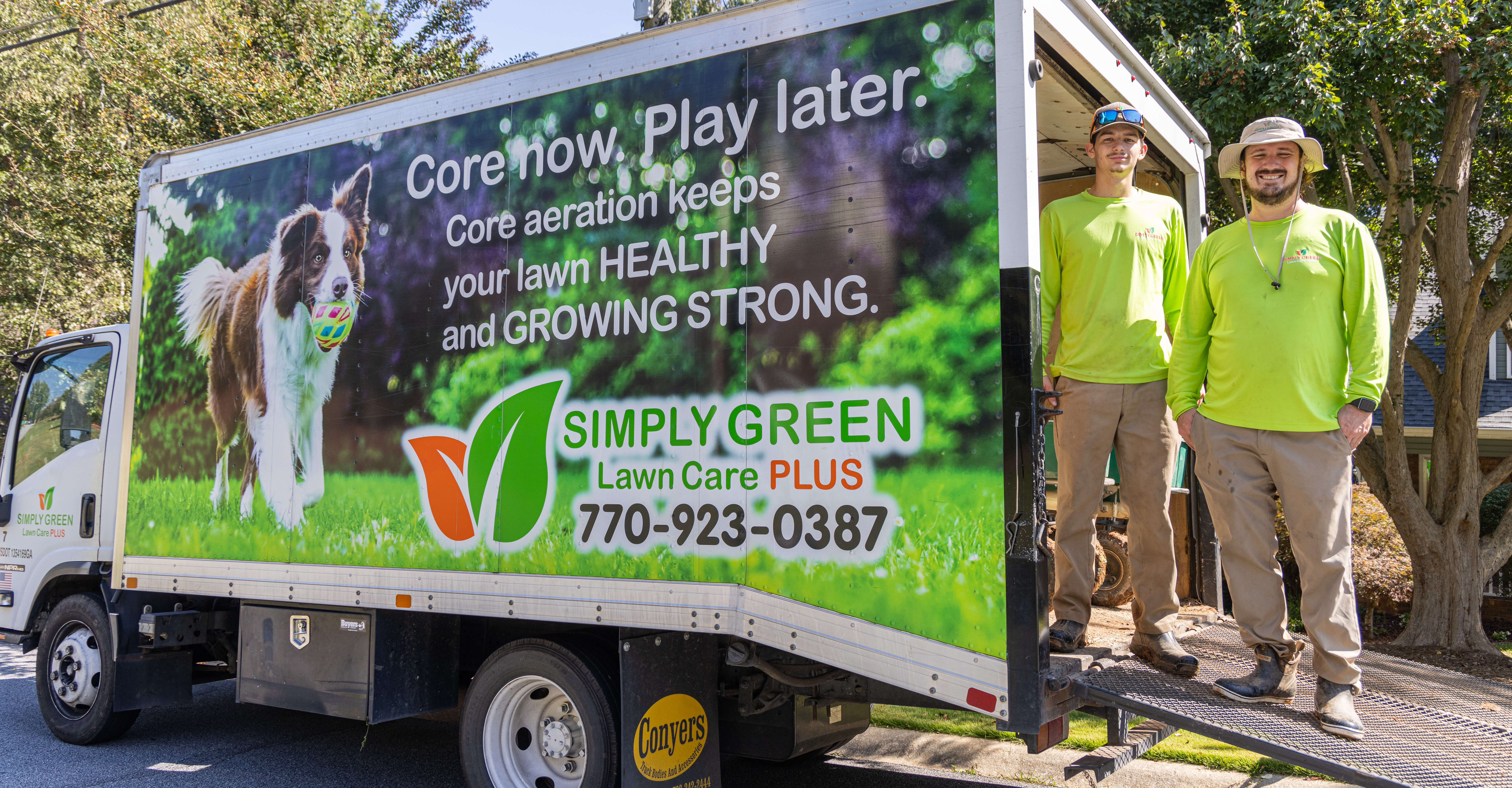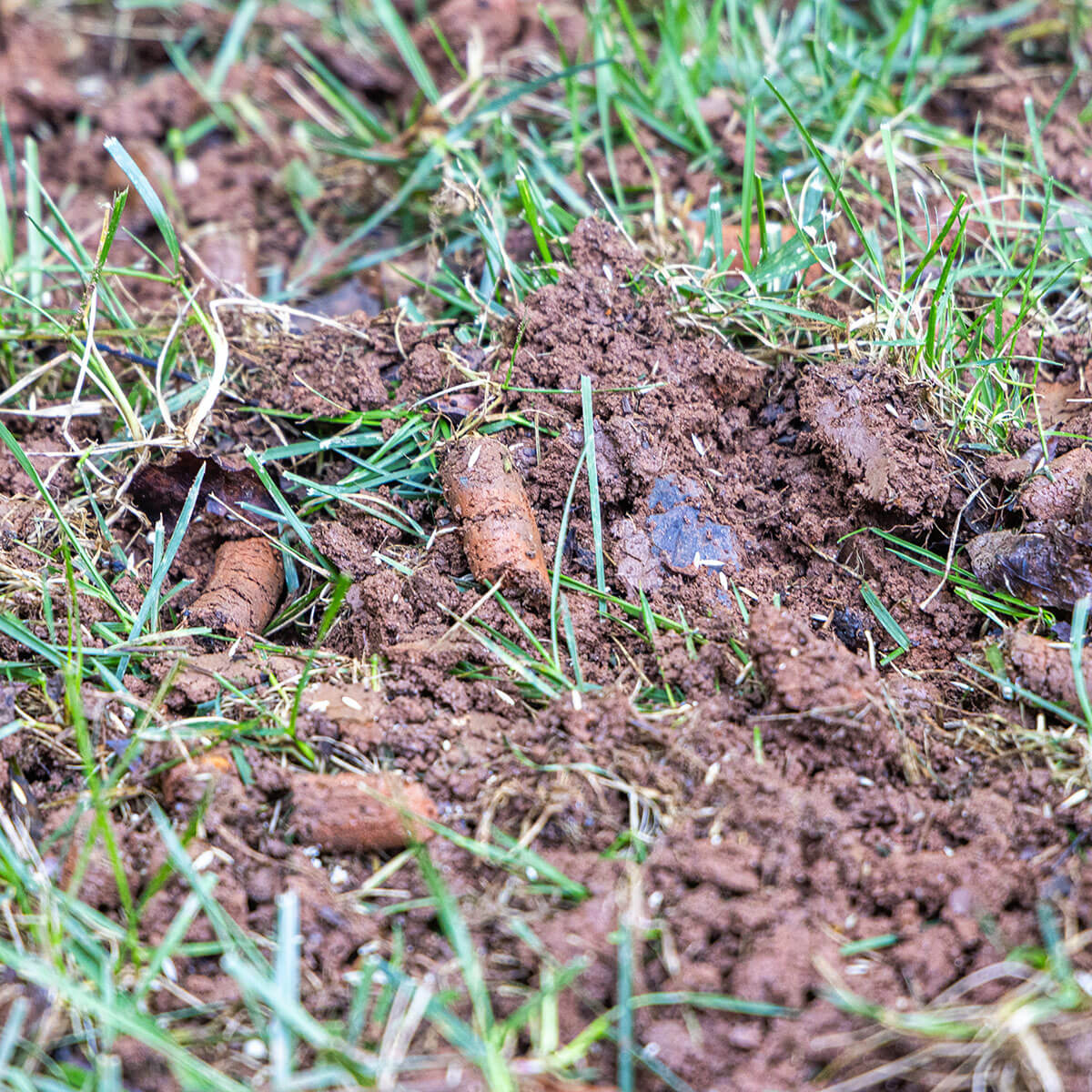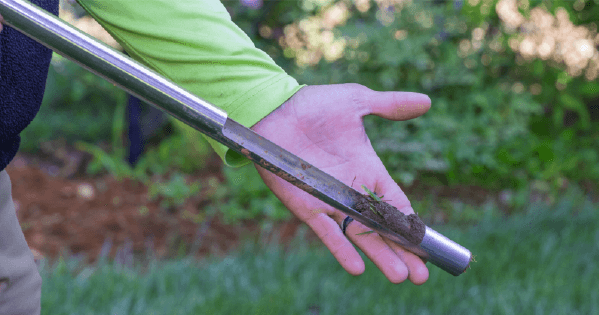
Whether you have already scheduled a time for our team to maintain your fescue lawn, or you are considering our Fescue Seeding and Aeration service, this guide will provide you with all the information you need to know about the seeding and aeration process.
This guide will cover:
- How to Prepare for Fescue Seeding and Aeration
- What to Expect After the Seeding and Aeration Process
- Post Seeding and Aeration Lawn Care Tips
- Fescue Lawn Resources
Preparing for Fescue Seeding and Aeration
If you are a current Simply Green customer and have scheduled a seeding and aeration time for your lawn, please read this section carefully, and follow the directions provided before your service date.

Mark All Obstacles
The core aerator’s metal tines can cause harm to any obstructions that are at or below a 3-inch grade. It’s important to mark objects such as, but not limited to:
- Irrigation heads,
- Valve box covers,
- Drainage pipes,
- Invisible dog fences,
- Shallow electrical lines, and
- Other subsurface items.
Wire flags, which can be bought at your local hardware store, are the most effective tools for marking, and they should be positioned directly above the object you are flagging. Simply Green is not responsible for accidental damage to objects in or under the lawn that are left unmarked.
To prevent accidental damage to any underground utility or communication cables, we STRONGLY encourage calling 811 as soon as possible to get them properly located and marked.
Mow Your Lawn
Your lawn must be mowed 2 inches or lower prior to the aeration and seeding. It’s important to remove any clippings or debris from the lawn by bagging them or blowing them away. This step is crucial for maximizing the contact between the seed and soil. Moreover, it provides ample time for the new seedlings to sprout and grow for several weeks before the next mowing is required.
What to Expect After the Seeding and Aeration Process

Routine seeding and aeration makes for a thick and vibrant lawn, but it doesn’t happen immediately after the process! Following the seeding and aeration, it is completely normal for your lawn to appear disordered because there will be plugs scattered across your lawn.
You might also notice dirt or mud accompanied by stray seeds along your driveway and sidewalks. This is normal, but we highly recommend rinsing the dirt and seed remnants off the concrete with a hose as soon as possible to prevent stains. Our technicians are unable to rinse the sidewalk and driveway as they do not carry water hoses on their trucks.
As mentioned, plugs created from the aerator will be scattered throughout your lawn. Please do not remove the soil plugs or rake them out of view.
Although the soil plugs produced by the aerator may not be aesthetically pleasing, they serve a significant purpose! As the plugs break down, the nutrients contained within them are released back into the soil. This provides additional nourishment for your newly seeded grass. With proper watering, which will be discussed in the next section, the plugs will disintegrate over a relatively short period of time!
Post Seeding and Aeration Lawn Care Tips
The success of the seeding and aeration process as well as the overall beauty of your lawn will rely on how well you care for it during the weeks after the service. Below are guidelines on how to care for your lawn following the aeration and seeding.
Start Watering Immediately
Insufficient watering is the most common cause of seed germination failure, so it’s critical that you do not allow the seedlings to dry out. The seeds must be kept moist at all times for several weeks – even before they sprout! The moisture is what enables them to start growing.
Although the seeds must remain damp, it’s important that you do not over soak them. If your lawn is oversaturated to the point of forming puddles, this means you are overwatering. A good rule is to water them 2 - 3 times a day for about 15 - 20 minutes each time.
The hydration needs of your newly seeded lawn will change as the seeds sprout into seedlings. The following 9-week watering schedule will ensure your seeds and seedlings receive adequate watering until they are fully established:
Water Recommendations for Weeks 1 - 3 after Seeding
Daily watering is required for the first 1 - 3 weeks after the seeding. Give your lawn 0.25 inch of water per day. With proper watering, your seeds should start germinating within 21 days after the seeding.
Water Recommendations for Weeks 4 - 9 after Seeding
After weeks 2 - 3, your seeds should be fully germinated. These new seedlings will need to be kept moist for 4 - 6 more weeks, so their roots and blades can develop properly. During this stage, you can apply about 1 - 1.5 inches of water per week over 2 - 3 watering sessions.
Check Your Seeds Daily
If you notice the new seeds drying out at any point during the day or night, introduce an additional watering session to your usual frequency. Depending on the size and positioning of your yard, some areas of your lawn will receive more sun exposure than others. This may cause some areas to dry out while others remain damp. If this occurs, address those dry areas by implementing more frequent watering sessions or increasing the volume of water you give them. Conversely, shaded areas caused by tree canopies, shade structures, or the layout of your yard will dry slower than areas that have direct and constant sun exposure; so make sure they are not being overwatered!
Remember Patience and Consistent Watering Are Key
Seeds typically need at least 2 - 3 weeks to germinate, so it’s important to maintain a regimen of light, frequent watering during this time. If the watering is halted or inconsistent, the seeds may fail to germinate -- or worse, the new grass could perish. Once the seeds have fully germinated, you can decrease the frequency of watering. At this point, you can return to your regular watering schedule, applying about 1 - 1.5 inches of water per week over 2 - 3 watering sessions. If you would like to ensure your lawn will be properly hydrated while saving money on your water bill, we recommend you request our Hydretain Water Saver product application.
Remove Any Fallen Leaves
If fallen leaves cover the new grass for over 2 - 3 days, the grass can die. It’s best to use a leaf blower to remove the leaves since a rake can often hurt the new sprouts.
Do Not Cut Your Lawn
To prevent redistributing seeds or damaging newly sprouted seedlings, we recommend waiting several weeks before your first cut after the seeding. Though your lawn might look quite tall, we strongly encourage waiting for your grass to reach 4 - 5 inches high before mowing. When it is time for your grass to be mowed, trim it down to roughly 3.5 inches high. Do not to cut fescue grass shorter than 3 inches.
Call Our Team if You Have Concerns
If you are not seeing adequate results or germination from your seeding, do not hesitate to call our office! Our team can diagnose the situation and provide the best course of action for achieving the lush fescue lawn we all know and love.
Fescue Lawn, Seeding, and Aeration Resources
If you would like to learn more about the nature of fescue lawns as well as why it is important that they are seeded and aerated annually, we recommend reading our blog post about the importance of seeding and aerating your fescue lawn in late summer. If you are not yet a Simply Green Lawn Care customer but are interested in seeding and aerating your fescue grass, please visit our Fescue Seeding and Aeration service page, or contact us for a quote!

